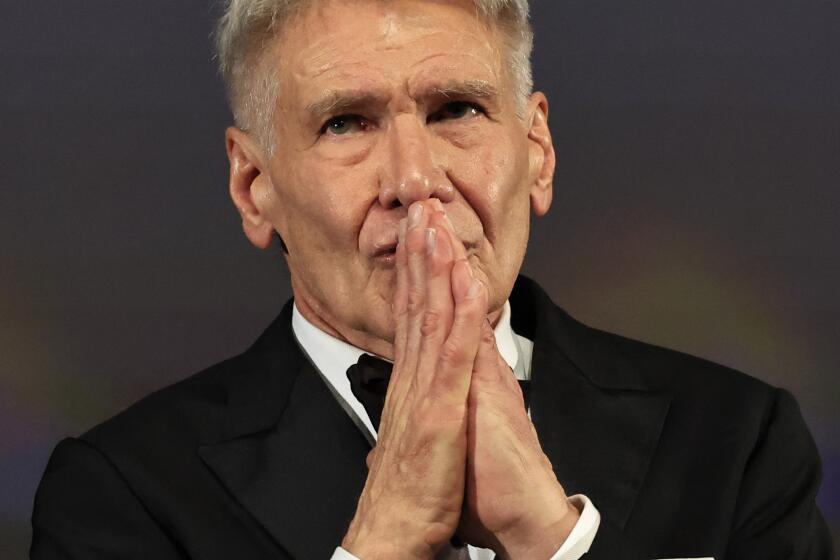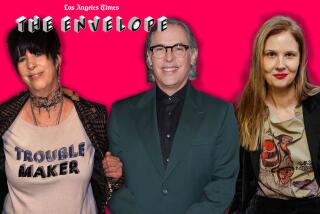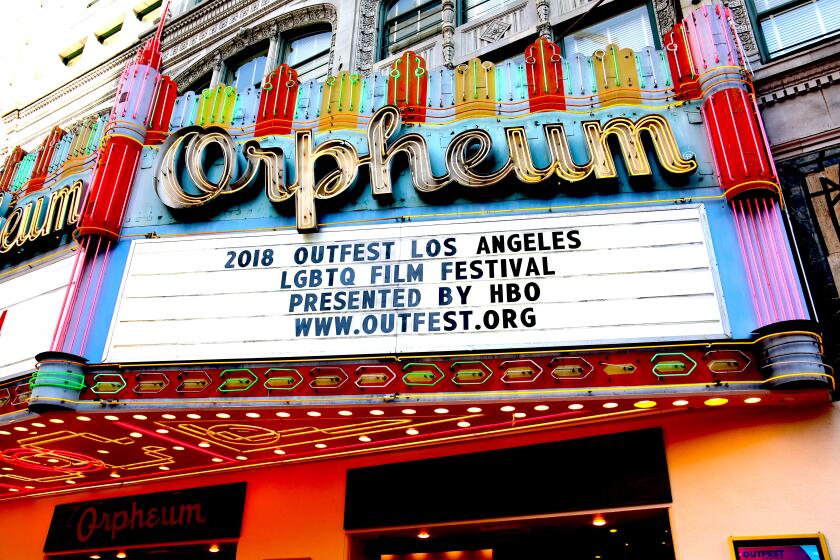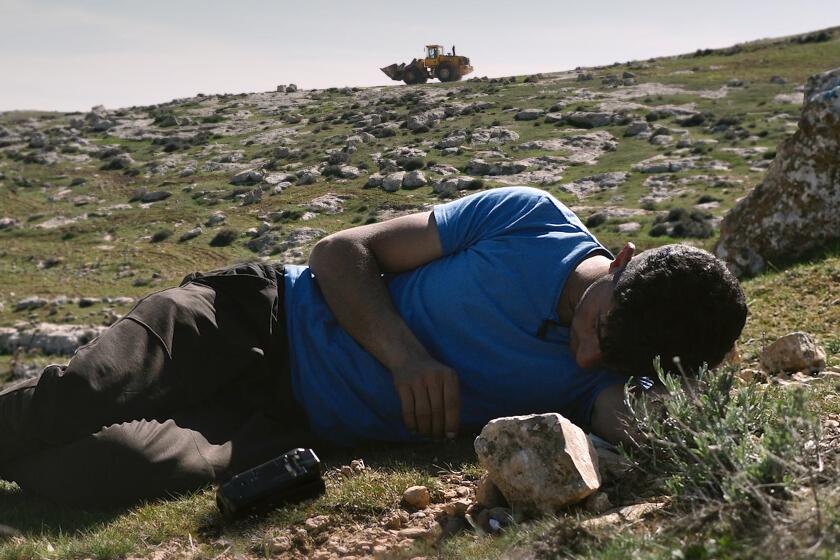Cannes: Scorsese’s ‘Killers of the Flower Moon’ grips, disturbs — and disappoints
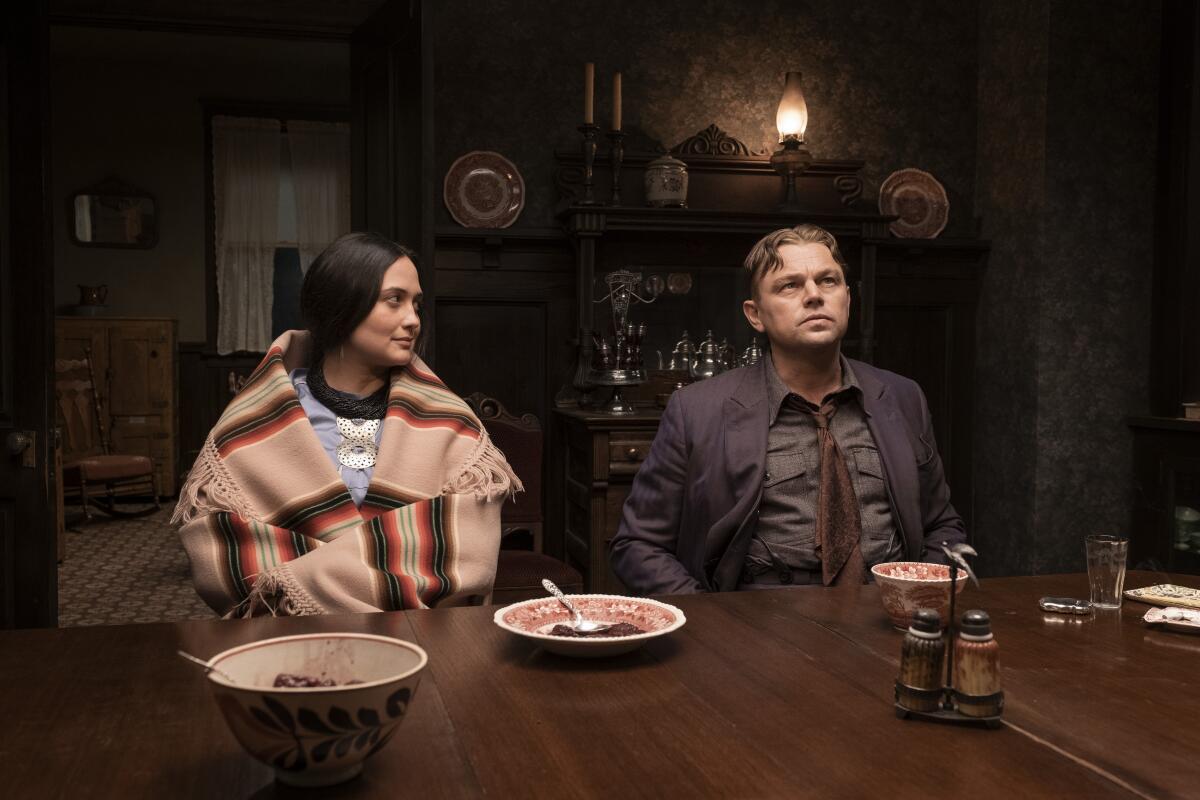
CANNES, France — Like more than a few Martin Scorsese epics, the searing, sprawling “Killers of the Flower Moon” recounts a horrific campaign of violence from the inside. Adapted from David Grann’s 2017 nonfiction book, the movie revisits an oil-rich, increasingly blood-soaked stretch of 1920s Oklahoma — a land whose wealthy Osage Nation owners have begun to die under brutal and mysterious circumstances. The killers’ identities aren’t obvious, at least not at first, though their motives very much are: Their aim is to right the balance in a world where their presumed racial and cultural inferiors have been granted an unworthy position of influence. To that end, the Osage must be divested of their riches by any means necessary, including oppression and extortion, marriage and murder.
The movie, which premiered out of competition at the Cannes Film Festival on Saturday, is both like and unlike anything its director has ever done.
It finds Scorsese reteaming with two of his favorite actors, who last appeared together three decades ago in “This Boy’s Life”: Robert De Niro plays William Hale, a powerful cattle rancher in Fairfax, Okla., and Leonardo DiCaprio plays Ernest Burkhart, his obedient if somewhat feckless nephew.
The larger sphere in which these two men and many others operate is, on one level, a familiar Scorsesean jumble of work and family, money and violence. And yet in its balance of Wild West expanses and intimate domestic spaces, and its focus on Indigenous men and women whose good fortune quickly turns ill, this world is also, for Scorsese, a fascinating new visual, dramatic and political frontier.
In the background of all the dense, teeming action you may hear reverberant echoes of “Goodfellas” and “The Irishman,” “Gangs of New York” and “The Wolf of Wall Street,” among other indelible American epics of organized crime and tribalist violence. But you will also hear — in the agonized cries and silences of an Osage woman named Mollie Burkhart (a superb Lily Gladstone), Ernest’s wife — a story of this nation’s original sin, here compounded to a degree of monstrosity and horror that can give even a chronicler of human evil as seasoned as Scorsese pause.
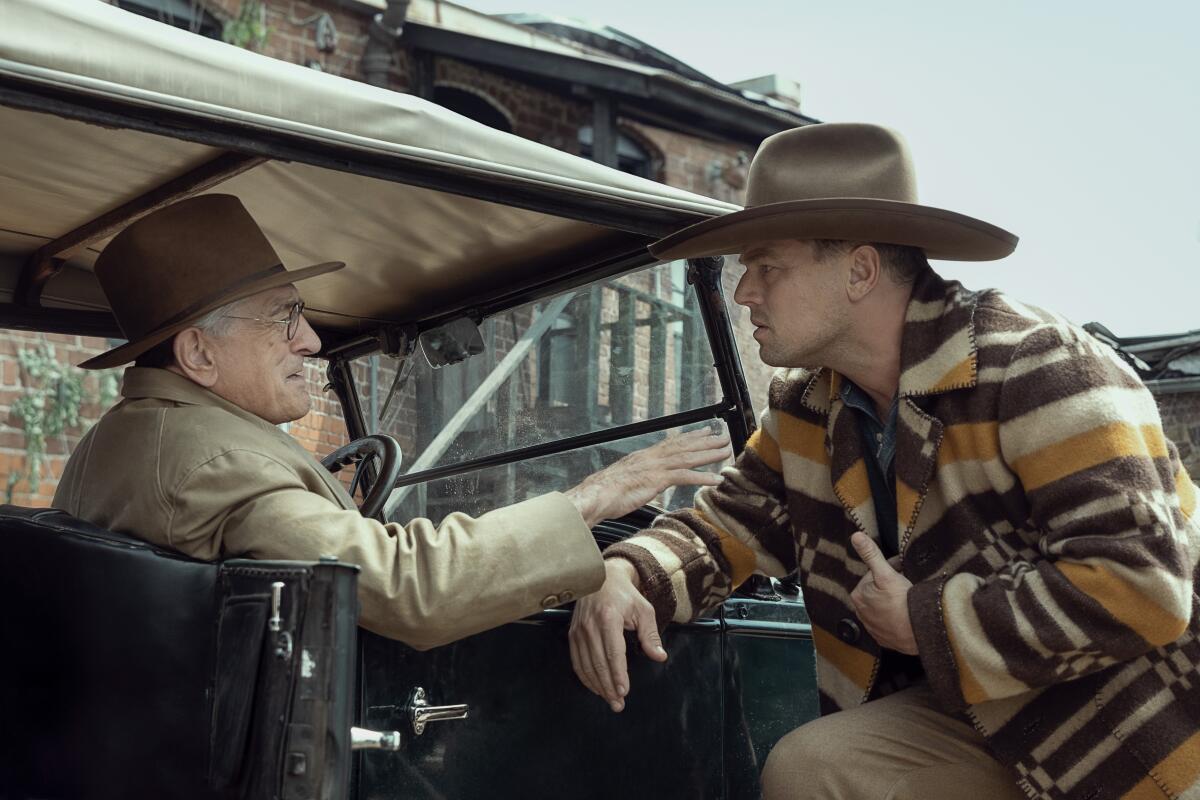
And a pause, at this juncture, is perhaps worth taking. Since well before the movie was even completed, the anticipation around “Killers of the Flower Moon” has been especially feverish. That’s partly because every new Scorsese movie is an event, for better or worse, and partly because its arrival, for some cinephiles, would be the truest sign that the movies, at least as we knew and loved them before March 2020, are well and truly back.
Before it begins streaming on Apple TV+, “Killers” will receive an October theatrical release through Paramount Pictures, which will provide a test of how large an audience remains for a filmmaker of Scorsese’s nonindustrial bent and epic ambitions. (His previous movie, 2019’s “The Irishman,” was distributed by Netflix.)
The movie’s unveiling at Cannes marks a meaningful return for a filmmaker who won the Palme d’Or here almost 50 years ago for “Taxi Driver” (1976) and whose unflagging commitment to world cinema can honestly be called commensurate with the festival’s own. But navigating Cannes can also be tricky, which may explain the caution apparent at the movie’s premiere: It received only one public gala screening at the festival and was slotted out of competition, though the festival’s director, Thierry Frémaux, has noted in interviews that he invited Scorsese’s movie to compete.
At a time when the state of cinema looks at once promising and as precarious as ever, a gamble as risky as Scorsese’s — and he is, as many of us have noted, a filmmaker who thrives on risk — comes cloaked in concerns about an acclaimed white filmmaker taking on a story of Indigenous suffering, plus the more banal anxieties about reviews, hype and awards season.
“I just saw my life flash before my eyes,” Ford said at Cannes on Thursday, thanking wife Calista Flockhart and his “Dial of Destiny” collaborators.
My own preliminary thoughts on “Killers of the Flower Moon,” which I look forward to revisiting closer to release, will attempt to avoid feeding either of those pitfalls. (It will also attempt to avoid giving away too many plot details, though since history can’t really be spoiled, read on with caution.)
Any proper estimation of the movie must begin with an appreciation of Grann’s painstakingly researched book, an intricately layered detective story that Scorsese and his co-writer, Eric Roth, try and sometimes struggle to condense. One of their shrewder tactics is to begin the story as an odd-couple courtship as Ernest, a war veteran, ingratiates himself with the wealthy, wary Mollie.
“He wants our money,” one of her relatives warns her. Mollie doesn’t deny it, but she also can’t deny that Ernest, though not the brightest of suitors, is handsome and charming and seems to genuinely care for her in an aw-shucks kind of way. An early shot of the two future spouses seated side by side at a table, quietly enjoying each other’s company, seems to put them on equal and trustworthy footing.
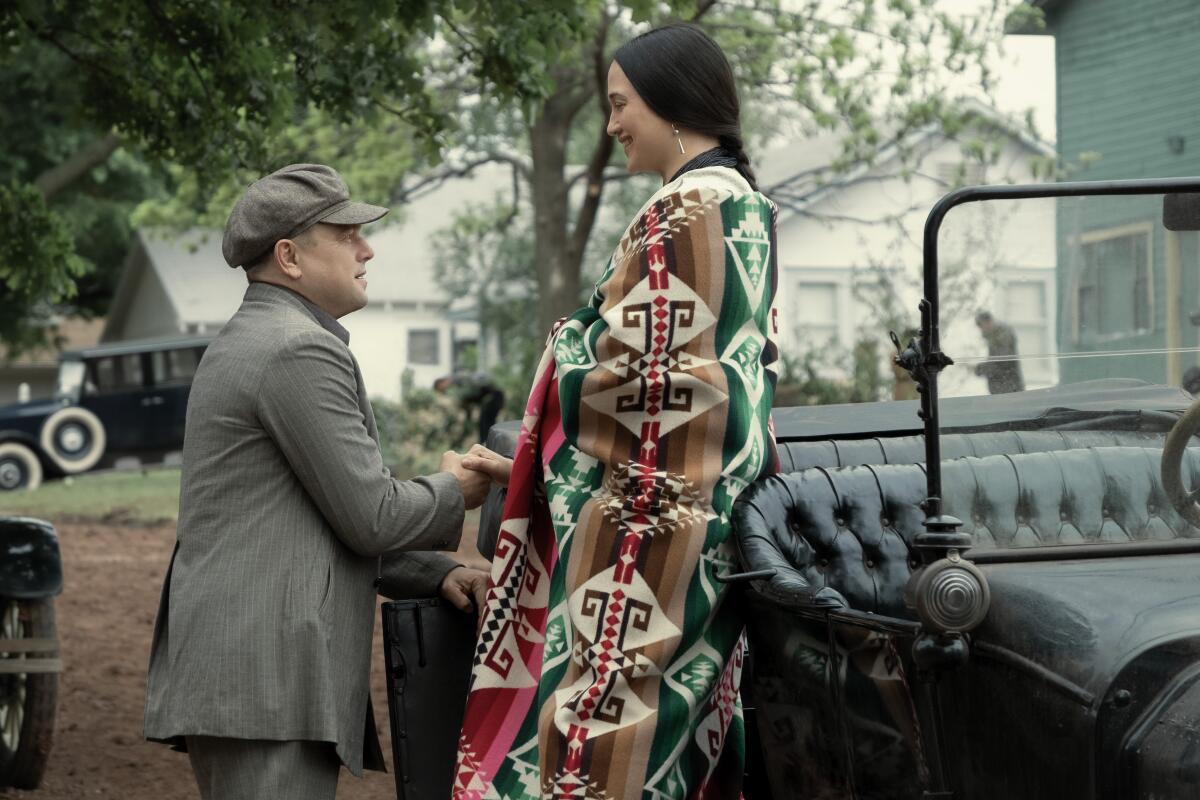
It’s a lovely image and also a lie. Years pass, children are born and the killings begin. Mollie’s sister Anna (Cara Jade Myers) is found shot to death near a river; their mother, Lizzie (Tantoo Cardinal), dies of a “wasting illness,” the same that will soon come to afflict Mollie. The deaths of these and multiple other Osage men and women in the surrounding community are rattled off in somber, dispassionate narration; few of them, we learn, resulted in any police action or investigation.
Hale, played with scarily authoritative restraint by De Niro, looms over the proceedings like a shadow; Ernest, like some of the other flop-sweat cases DiCaprio has played for Scorsese, becomes increasingly racked with guilt and self-loathing. Corruption and red herrings abound; bombs explode and bombshells are dropped. Answers are few and far between.
The truth comes slowly tumbling out — and justice of a sort is achieved — thanks only to the dogged work of Tom White (an underused Jesse Plemons), a gifted federal investigator tasked by an off-screen J. Edgar Hoover with getting to the bottom of the Osage murders.
Grann’s book doubles, thrillingly, as an early history of the FBI, and White emerges as its most compelling character. Disappointingly, his role and those of his fellow detectives, many of whom have to operate undercover, are given comparatively short shrift on-screen. It’s an understandable narrative strategy in a movie that wants to avoid the obvious, triumphalist conventions of the detective procedural and that wants to be a grim indictment of genocidal capitalism. But that becomes harder and harder to do as the story’s emotional and psychological weight shifts disproportionately toward Ernest, and in ways that DiCaprio’s increasingly anguished perma-frown of a performance can’t entirely shoulder.
It’s a strange way of life indeed at the 76th Cannes Film Festival, where rough weather, scandal-mired movies and Indiana Jones collide.
This is hardly the first time Scorsese has placed a man’s tormented soul boldly front and center; his two most recent movies, the very different “Silence” (2016) and “The Irishman” (2019), managed this with particular brilliance. But the triple-threat combo of Scorsese, DiCaprio and De Niro, obviously the movie’s main selling point, also comes to feel like its central distraction.
Gladstone’s performance, a heartrending mix of authority, confusion and fear, goes a long way toward keeping this dynamic in check, as Ernest and Mollie’s marriage becomes its own wrenching metaphor for the cruelty of Manifest Destiny. She’s the key to the movie’s more resonant, Osage-focused moments, the ones with little visual or narrative precedent in the director’s filmography.
At times you’ll wish cinematographer Rodrigo Prieto would linger longer on the wide-open prairie landscapes or on the lively, quotidian hustle and bustle in the streets of Fairfax. At key moments, Scorsese and his co-writer, Roth, will dramatize an Osage wedding, burial or other ceremonial tradition, pausing to take in the faces in the crowd and the intricate patterns on their robes. Or they’ll usher us into a meeting where tribal elders speak out against the violence being done to them.
The impact of their story may ultimately be more muffled than it should be, but in these isolated moments you hear their voices, their fury and their despair loud and clear.
More to Read
Only good movies
Get the Indie Focus newsletter, Mark Olsen's weekly guide to the world of cinema.
You may occasionally receive promotional content from the Los Angeles Times.
